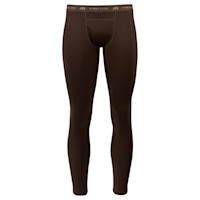
Ammunition can be classified into two categories, rimfire and centerfire. Small game hunters stick more closely to rimfire cartridges, they are smaller and destroy less meat.
Centerfire ammunition has a primer that sits in the center of the casing’s bottom, and that’s where the firing pin hits it. Centerfire ammunition can be reloaded, replace a primer, simply knock it out of the bottom and seat a new one.
With rimfire ammunition, the priming compound is located inside the hollow rim of the casing. The firing pin just needs to strike the rim and smash it enough to ignite the primer. Rimfire ammunition cannot be reloaded, because the firing pin effectively destroys the case.
Due to the fact that the metal on a rimfire case needs to be weak enough to be impacted by the firing pin, there’s an inherent limit to the power of a rimfire cartridge. They cannot withstand the high pressures that centerfire cartridges can put up with.
Popular Rimfire Rounds
The rimfire class of cartridges includes the .17HMR, .22 Win Mag and the exceedingly popular .22 LR. The .17 HMR is a very fast and flat shooting cartridge that is borderline too powerful for the small game hunter who hunts for the table. Quite simply, it causes too much tissue damage on lightweight game such as squirrels, rabbits, and grouse.
The .22 WMR is a suitable small game round, particularly when shooting solid point bullets. But in the opinion of most serious small game hunters, the extra yardage that you get with a .22 WMR does not make up for the extra cost of ammunition and the extra tissue damage that it inflicts on small game.
Rifles chambered for the .22 LR can safely handle a small family of “other” .22 cartridges as well, including the 22 CB, .22 Short, and .22 Long. For practical purposes, however, let’s limit our discussion strictly to .22LR ammunition because there’s really no great reason for a modern small game hunter to mess around with these alternate ammunition. Also, semi-automatic rifles can encounter major cycling problems with .22 CB and .22 Short ammunition.
.22LR cartridges are classed according to velocity. There are subsonic velocity, standard velocity, high velocity, and hyper velocity loads. Subsonic loads have a muzzle velocity less than the speed of sound, 1,125 feet per second. The subsonic loads are basically scaled down versions of the .22 LR, often the propellant for them is nothing more than the primer itself.
The greatest advantage to subsonic loads is the reduction in noise, as there is no “crack” that comes with the breaking of the sound barrier. These loads are most often used for target practice and short range pest control, but they are great for small game hunters who need to exercise discretion in areas where hunting is legal but might be frowned upon by nearby residents.
Standard, high, and hypervelocity loads are the more common choices for small game hunters. These speedier loads give you a flatter trajectory and increased range. Below, you’ll see where the highly authoritative gun writer Chuck Hawks offers a detailed, technical explanation of the various .22 LR ammunitions that are available.
Read the passage carefully before selecting hunting ammo for your .22, especially the part where Mr. Hawks endorses high-velocity 36-grain and 37-grain copper plated hollow points for general small game hunting. Take some time at the rifle range to shoot ammo from a number of manufacturers in order to find the load that shoots best through your particular rifle.
Chuck Hawks Take on the .22LR
“The .22 Long Rifle is the most popular and the most highly developed cartridge in the world. The major ammunition producers have put more research and development dollars into this modest little cartridge than any other. It is used at the highest levels of match target competition, including the Olympic Games. Strange, when you think about it, as the .22 LR is also, along with its predecessors the .22 Short and .22 Long, the most antiquated of cartridges.
“The rimfire principle was used to create the first successful self-contained metallic ammunition. Rimfire cases are constructed with the priming compound spun inside the rim of the copper or brass case, which is crushed by the blow of the firing pin to ignite the main powder charge. This damages the case so that it is useless for reloading and the rimfire design requires a far weaker case rim than the solid head cases used for centerfire ammunition. The permissible maximum average pressure for rimfire ammunition is much lower than possible with centerfire cartridges. Yet, the .22 LR endures and prospers, outselling all other sporting cartridges by a large margin every year.
“All current .22 rimfires, except the relatively recent .22 WMR, are ancient black powder designs and use tapered heel bullets. If you examine a .22 S, L, or LR cartridge you will see that the case and bullet are the same diameter. The part of the bullet inside of the case, the heel, is reduced in diameter to allow it to fit inside of the case. Such bullets are also called “outside lubricated” because they are ordinarily waxed or copper plated.
“In all other modern cartridges, the bullet shank is of constant diameter and the case is slightly larger than the bullet to allow the heel of the latter to fit inside. This old fashioned term for this design is “inside lubricated,” as the lubrication grooves of lead bullets are inside of the case.
“The .22 S is a development of the BB cap using a 29-grain Round Nose bullet in a lengthened case, compared to the BB Cap. It was originally powered by 4 grains of fine black powder. Strange as it sounds today, the .22 S was originally developed as a self-defense cartridge for use in a handgun. Today, CCI loads their .22 S Target ammunition to a muzzle velocity of 830 fps for rapid fire pistol competition.
“The .22 S is a pretty anemic round and in 1871 a longer case of the same diameter was developed for the 29-grain Short bullet. This became the .22 L cartridge, still occasionally seen, but obsolescent, today. The .22 L was once chambered in a large number of pistols and rifles. It was originally loaded with 5.0 grains of very fine black powder and offered about 100+ feet-per-second greater velocity than the .22 S.
“In 1887, the Stevens Arms Co. developed the ultimate in .22 rimfire cartridges, the .22 LR. This used the .22 L case with a 40 grain RN bullet loaded to higher velocity than the 29 grain L bullet. It shot flatter and hit harder than any of the previous .22 rimfires, except the earlier .22 Extra Long, whose performance it essentially duplicated in a shorter case. The .22 LR proved to be more accurate than that cartridge and therefore replaced the .22 EL, which has been obsolete for a long time.
“The .22 LR caught on, was adapted to both rifles and pistols, and became the most popular sporting and target shooting cartridge in the world. After the advent of smokeless powder and high-velocity version of the .22 LR was introduced, which further extended the .22 LR’s superiority as a small game hunting cartridge.
“Modern .22 LR target ammunition is loaded to a maximum velocity of about 1085 feet per second with a 40-grain round nose bullet. .22 LR high-velocity cartridges drive a 40-grain copper-plated bullet at a maximum velocity of 1255 feet-per-second and maximum energy of 140 ft. lbs. from a rifle barrel.
“For small game hunters, most manufacturers offer a 36-37 grain copper-plated lead hollow point bullet at about 1280 feet-per-second. This load expands nicely and makes for quick kills on small game, given proper bullet placement. The maximum point blank range (+/- 1.5 inches) of typical .22 LR high-velocity loads is about 90 yards when fired from a rifle with a telescopic sight mounted 1.5 inches above the bore.
“Because of its popularity, there are many permutations of the .22 LR cartridge. One of the least common is the .22 LR shot cartridge, which fires a pinch of very fine #12 “dust” shot. This load is used, among other things, to collect very small creatures, mice and the like, for museum displays when fired from smooth bore barrels.
“Far more useful are the hyper velocity .22 LR loads, pioneered by CCI in the form of the Stinger. These use lightweight hollow point bullets at increased velocity for flatter trajectory and dramatic expansion. Remington followed suit with their famous Yellow Jacket load, and the idea was subsequently picked-up by most other manufacturers. The CCI Stinger drives a 32-grain hollow point bullet at a maximum velocity of 1640 feet per second with 191-foot-pounds of maximum energy.
“The .22 LR hyper velocity cartridges are the varmint loads of choice for those hunting sand rats, gophers, rats and the like with their .22 rifle or pistol. They kill quickly, but are likely to do excessive damage, unless only headshots are taken, to edible small game. The hypervelocity loads are also the best choice for anyone using a .22 LR firearm for personal protection, as they have demonstrated more stopping power than traditional high-velocity loads.
“For small game hunting with both rifle and revolver, I prefer the .22 LR high velocity 36-37 grain copper plated hollow-point loads from CCI, Mini Mag, Remington, Golden Bullet, and Winchester, Super-X. I have spent a great many enjoyable hours in the woods carrying my old Marlin Golden 39-A Mountie. That lever action carbine and I have harvested no end of squirrels together and provided many a meal on camping and hunting trips.
“Somehow, I have managed to wear out two firing pins, easily replaced in a Marlin 39, over some 50 years of small game hunting with that old take-down rifle, but it is still a deadly shooter. Manufactured sometime in the 1950s, it had already seen plenty of use when I traded a hunting partner out of it. He had his heart set on a Kodiak .22 WMR rifle I happened to own. However, that is a story for another time.”
Chuck Hawks is the owner and managing editor of Guns and Shooting Online www.gunsandshootingonline.com





